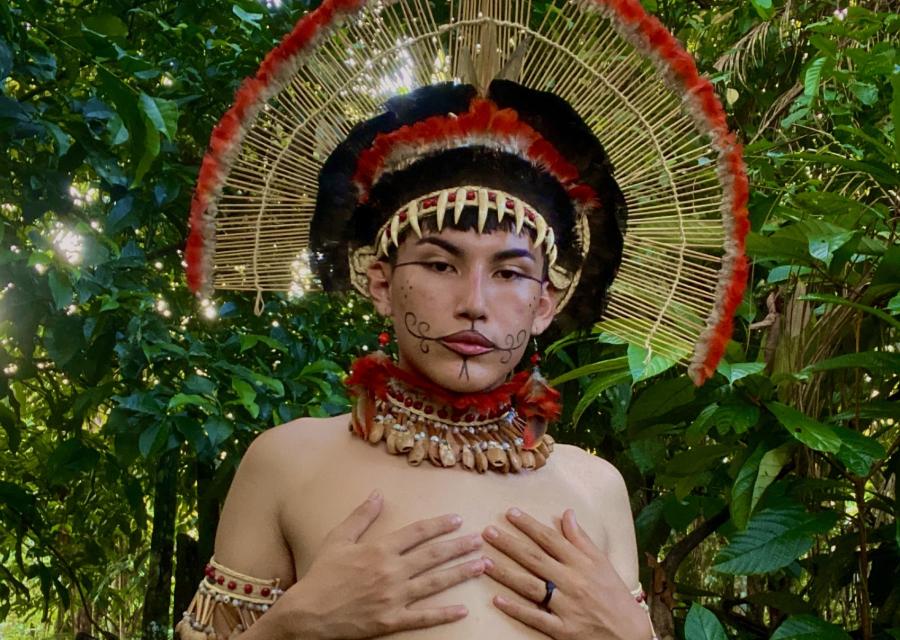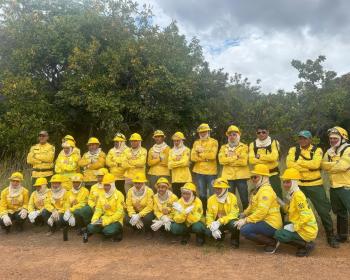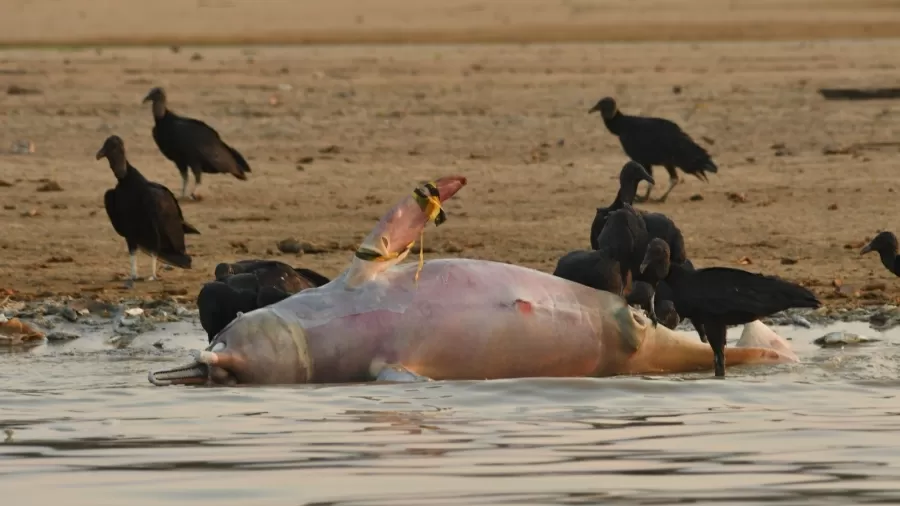Indigenous People Fight to Save Their Lands
On four different occasions, in just one and a half years, from July 1984 to December 1985, indigenous peoples of five different tribes in one region of the Brazilian Amazon Basin, have organized armed expeditions in order to protect their own lands which white squatters had invaded. This region, about the size of Connecticut, is one part of the area where the large Polonoroeste development project is being implemented, partly financed by the World Bank. The first conflict occurred in the Area Indígena do Igarapé Lourdes.
In July 1984, the peoples inhabiting the Area Indígena do Igarapé Lourdes, i.e., the Gaviao, Arara and a few Zoró, tired of waiting for help from FUNAI, the Indian governmental agency, confronted squatters from Ji-Paran who had crossed Prainha creek and settled on the southern part of their reservation. The indigenous peoples took 12 hostages, all of them Brazilian males, and held them in their main village until the regional FUNAI chief freed them. A few days later, two people who had come to show the Catholic church's support for the indigenous peoples' struggle were also imprisoned and kept hostage for a short period.
In the end of September and beginning of October 1984, 30 Surui warriors, armed with shotguns and traditional weapons, loaded a pickup truck and moved toward the far north end of their reservation. Hundreds of squatters, who had occupied thousands of acres of Surui land, fled as soon as they heard that the Surui were coming. Having fled so quickly, the squatters left everything they had, including valuable items such as chain saws and steel-made tools. The Surui stayed there for a few days, patrolling the region. Eventually they burned down a few temporary shelters and then returned home, taking with them all the valuables they had found.
In August 1985, the Zoró felt compelled to take similar action. White squatters had settled close to the Zoró's only village: they could be reached in just a few hours' walk. Worried about the takeover of their land, 40 warriors took up the weapons they had discarded in 1976 with the hope that they would never again be necessary. I was in the Zoró's village doing anthropological research at that time and witnessed the entire event.
On Christmas Eve 1985, it was the Cinta Larga's turn to fight for their land. About 150 warriors joined two young, determined leaders against the workmen of nine big ranches which occupied about 90,000 acres of Cinta Larga land in the proximity of the Roosevelt River. On December 26, all the white people residing on those nine ranches were driven off the reservation. The Cinta Larga warriors stayed there, ready, waiting for any reprisals. By the middle of January 1986, talks started between Cinta Larga leaders and farm owners regarding the hundreds of cows, pigs and horses as well as other belongings which the farm residents had left behind in the Cinta Larga's possession.
Not one of these conflicts took a single human life. Indigenous peoples are often well aware that killing is no longer of any use to their cause. As long as they are in control of the situation, they avoid such occurrences. By contrast, this is not often the case when white people are in control. A self-proclaimed landowner claiming a large territory on the southernmost part of Rfondônia ordered indigenous peoples wandering on "his" land to be shot. In October 1985, half a dozen Mequem or Nambikwara - the case is not clear yet - were killed.
Land Rights Basis of Conflicts
Land is the main problem in this small corner of the Polonoroeste project area, but it does not concern only indigenous peoples. On July 24, 1985, a Catholic priest, Fr. Ezechiele Ramin, who supported poor white land-lessors, was shot to death by professional killers hired by landowners. Around the end of November 1985, a self-proclaimed landowner and his general manager were killed by the squatters Fr. Ramin had helped. A few days later, another farm manager was shot to death by squatters he was trying to expel from the farm.
Land is the most important reason why white people, beginning in the early 1970s, have been moving en masse to Rondônia. In what is now a permanent conflict over the land, each group - be they indigenous peoples, poor white squatters, powerful self-proclaimed landowners, colonists settled by INCRA (the national agency for colonization and agrarian reform) or rural workers - experiences the struggle in a different way. Although comprehensive studies have yet to be done, I believe the indigenous peoples suffer the most; they are paying the price for everybody.
Zoró Struggle to Retain Land
Take the Zoró for instance. There used to be many more Zoró than there are today, who lived on a much broader territory than the one on which they are now confined. Divided into several small groups, the Zoró also used to be the only people who had the right to live on the land from the east side of the Roosevelt River to the left tributaries of the Madeirinha River. The elders remember quite well the arrival of the first white people who dared to establish themselves along the rivers and streams that criss-cross the Zoró territory in order to gather wild products - mostly rubber - and to look for minerals. At that time, they posed no threat whatsoever to the Zoró. In a certain way, the Zoró "welcomed" them, because by raiding their shelters and eventually killing them, the Zoró could provide themselves with iron tools and other Western goods.
The white people eventually grew in number and became more aggressive. Soon it was land that they wanted. They destroyed entire Zoró communal houses and killed all the inhabitants in order to clear the region and raise cattle where the Zoró used to live. Even today it is possible to talk with people in Ji-Paran who took part in such raids.
Zoró warriors, the best archers of the region, retaliated, but could not stop the white invaders. Furthermore, they also had to counter pressure from other indigenous groups, namely the Surui and Cinta Larga, whose lands had already been overtaken by whites and who had now moved north to Zoró land.
At one time, some Zoró recall, they were at war in three different places at once: on the east and on the west of their present territory against the workmen of the large farms which were popping up here and there on Zoró land; and on the south against the Surui who were being pushed northward by colonists coming from the newly opened BR-364 route.
Zoró Accept FUNAI's Policies
The Zoró kept fighting but eventually had to retire on a sanctuary formed by the Branco and Roosevelt rivers. By the middle of the 1970s, they laid down their weapons - epidemics added losses to the war casualties - and in 1976 began holding nonviolent meetings with the workmen of the fazenda Castanhal, a big ranch with headquarters established exactly where some Zoró communal houses formerly stood.
By the end of 1977, when FUNAI agents arrived, led by Apoena Meirelles and José do Carmo Santana, the Zoró welcomed them. Without any difficulty or delay, FUNAI was able to establish an outpost among them.
From 1977 until August 1985, the Zoró "accepted" everything FUNAI did, even the brutalities an outpost chief committed against their women. When visiting their Gaviao friends, the Zoró encountered New Tribes missionaries and eventually adopted their religion. The Zoró thought that accepting everything the whites wanted was the best way to be accepted by them, to have peace and to keep the territory that had become so costly to save.
Although invasions of their territory were in progress, the Zoró scarcely had time to notice them. Since the arrival of a new FUNAI outpost chief, in 1981, they had been forced to work eight to 10 hours per day, five days a week. Only on Saturdays were they left to themselves and usually went hunting or fishing. Sundays were devoted to religious activities, as the New Tribes missionaries had taught them. This way of life did not leave the Zoró time to wander through their territory and realize what was happening, although they were quite aware that the overall situation was not good for indigenous peoples. News of the hostilities at the Area Indígene do Igarapé Lourdes, the alliance Surui chiefs sought, and visits from Cinta Larga-based Zoró were all clues the Zoró easily interpreted. Nevertheless, they were confident that their sympathy toward the white people would be reciprocated.
FUNAI Fails to Help Zoró
It was, therefore, the FUNAI outpost chief, after returning from a trip outside the reservation, who brought the news that white invaders were taking over Zoró land. He told the Zoró that FUNAI was not able to do anything to protect their land. If the Zoró wanted their land - as he put it - they would have to take care of it, protect it themselves. With these words FUNAI agents rid themselves of a problem that they had in part created. In fact, the main stream of this invasion was entering from a route that crossed the southern border of Zoró land. After the jungle was cleared beginning in 1977, this route was opened in 1981 with the consent and approval of FUNAI authorities.
By refusing to help the Zoró, FUNAI was also violating two Brazilians laws: 5371 of December 5, 1967, and 6001 of December 19, 1973, according to which it is FUNAI's duty to protect indigenous peoples' lands. In a small, isolated indigenous village in the jungle, 250 km away from the nearest Brazilian settlement, however, laws and rights do not seem to matter much.
Thus, on Monday, August 26, 1985, 40 Zoró warriors, adorned with red and black dye, macaw and sparrow hawk feather crowns and black necklaces across their breasts, armed themselves with shotguns, bows and arrows, knives and machetes, left the village and disappeared into the bush. They won their first battle, and seized three whites who were brought back to the village to be kept as hostages. As the Zoró advanced, however, they realized that too many white people were already established on their territory. Three days later, on Wednesday, August 28, the Zoró returned to the village. On Friday, August 30, the regional FUNAI chief came and freed the three hostages.
In the aftermath of the August events, I talked at length with the Zoró. It is difficult to assess the importance of this war for the Zoró, but at least one thing is now clear: this war has changed the way the Zoró regard whites. During that dramatic week, the Zoró clearly realized, for the first time since their surrender in 1976, that their respect for white people and acceptance of Western ways of living do not guarantee that white people in return will accept them and respect their land and that FUNAI is not their ally. In one week, they learned quickly what the Surui, Cinta Larga, Arara, Gaviao and many other indigenous peoples of the region already know: indigenous peoples cannot count on anybody but themselves. Even the personnel of the economic research institute, Fundaçao Institute de Pesquisas Econômicas' commission, who work with the World Bank to monitor the Polonoroeste project's impact on indigenous peoples, have aligned themselves more closely with FUNAI's policy - even more so after Apoena's nomination to the presidency of FUNAI. Commission members presented themselves as defenders of the indigenous peoples' cause, but today, nobody is able to differentiate between what they want and propose and what FUNAI wants and proposes. To make matters worse, one member went so far as to propose an area for indigenous peoples smaller than what FUNAI was ready to accept, and without two important waterfalls.
Zoró's Struggle Remains Unresolved
When I left Rondônia, on December 7, 1985, the Zoró's land problem was not settled and, as far as is known, no solution was being sought. It is true that in the fall of 1985, the Brazilian army began to demarcate some indigenous peoples' areas, including the Zoró's. But, as all the colleagues I talked with said - and I totally agree with them - this kind of demarcation is of no practical use in ensuring indigenous peoples' lands; it has been made solely to keep the World Bank quiet. In fact, the army opened a three-meter wide pathway all around the indigenous groups' areas - the Suruí had asked for a 50-meter wide pathway - which means that after the next rainy season the pathway will no longer exist. In any case, the white invaders were left inside and still remain within that miserable pathway.
As far as I can see, the wars mentioned above will very likely continue and worsen. One thing is missing in the huge Polonoroeste project: a place for indigenous peoples.
Article copyright Cultural Survival, Inc.



